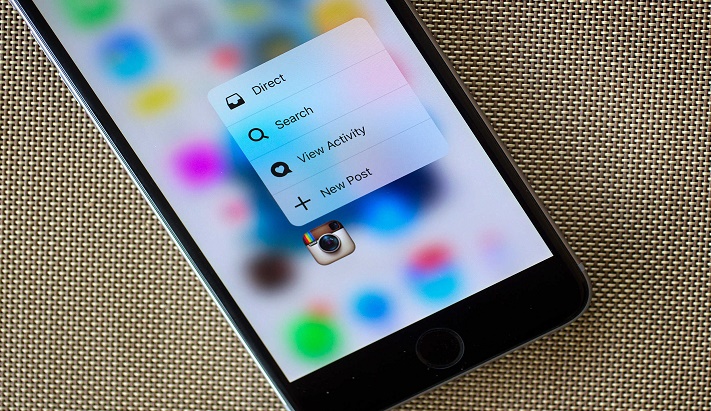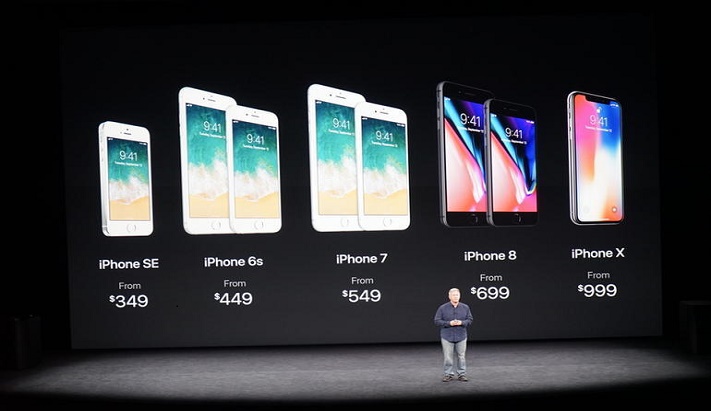It is a feature that can only be offered by the South Korean firm Ssmsung . It will make a big business with Apple’s iPhone X .
When the buyers of Apple unpack the new iPhone X will have main developments of Samsung.
They will see it again and again, because of the screen of Apple’s new cell phone. It uses OLED technology that has been manufactured by the South Korean firm for years.
“An OLED display and its new design are likely to become the standard in future iPhone models. Apple must address the challenge of obtaining sufficient supplies,” Geoff Blaber of consultancy CCS Insight told the BBC.
Samsung has the capacity to supply the number of OLED screens that Apple requires for iPhone X.

This would not be the first time that Samsung have supplied components to Apple. Two companies that have long disputes in court over the use of patents.
The OLED screen of the iPhone X will offer a better visual experience to the users than the LCDs of the previous models.
In its official list of suppliers , Apple obtained components from 16 factories of the South Korean company.
What is OLED technology?
The organic light emitting diode (OLED) technology is not exclusive to any firm. But Samsung has been the leader in its implementation in mobile devices.
The analyst Tuan Anh Nguyen says that Samsung controls approximately 90% of the market of OLED screens.
These digital screens are composed of millions of light emitting points, pixels, each of which has the ability to light up.
Samsung uses Super AMOLED technology in phones such as the Galaxy S8 and the Galaxy Note 8. Reuters until the iPhone 7, Apple used LCD screens that have pixels that change color with a backlight source. But OLED screens each pixel has its own light source.

For example
when a notification appears on the locked screen of a mobile phone with an OLED screen only the necessary pixels are activated.
It also has a faster response time: 0.01 milliseconds, compared to 1 millisecond of the LCD screens.
That is why not only Samsung phones, but also some models of LG and Sony brands use OLED screens (or its different variants, such as AMOLED, Super AMOLED or POLED).
Apple is often criticized for being the last to implement new technologies that are already on the market.
These screens have a better visual performance, but also have a shorter life and require more care. “Wireless charging comes years after Samsung introduced it for the first time. iPhone X which no longer has the iconic start button, looks surprisingly similar to the latest Samsung Galaxy Note” , says Dave Lee.
The screen that Apple chose for its iPhone X takes the width of the phone “from end to end”. So it will no longer have the edges that previous models have.
The Samsung S8 and the Galaxy Note 8, which went on the market earlier this year, already have this design.
Samsung Display Solutions – the subsidiary of the South Korean firm that develops screens – is one of the world’s largest manufacturers of OLED monitors.
“No other company is capable of producing OLED mobile displays in the same scale and consistency as Samsung,” tech journalist Chris Welch wrote in The Verge magazine.
Raise the cost
With each presentation of a new iPhone, its price rises, but the X version made the biggest jump in price to reach US $ 1,000.
A part of this increase comes from the OLED technology that Apple decided to implement.
The basic iPhone X will cost US $ 999 plus taxes, which makes it the most expensive mobile produced by Apple.

Ken Lacey, executive director of Lomox Ltd., tells BBC Mundo that its production is expensive and its life time is short.
According to the research of analyst Ming-Chi Kuo, being Samsung the leading OLED developer in the world has in its power to set the price.
The expert estimates that it will be up to US $ 130 per unit, which more than doubles the price of LCD screens that Apple was paying in its previous models, about the US $ 55.
Hence, Apple is in search of other manufacturers, such as LG that in addition to implementing OLED displays on your V30 phone, also supplies them to the Google Pixel model.
Producing them is not easy because a particle of dust during its manufacture can ruin an entire screen.
And the owners of the new iPhone X will have to be much more careful with their devices.
OLED screens are not only more sensitive to shocks, but water can damage their operation much more easily.
Tags: Apple, iPhone X, oled technology



Leave a Reply